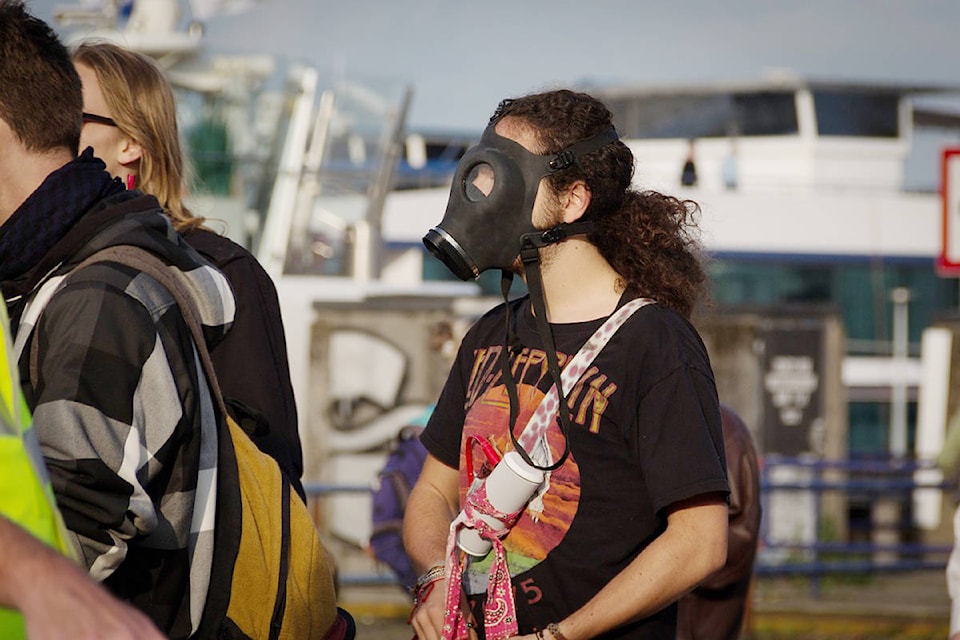History repeats itself — at least it does when professional activists rely on a formula for successfully killing any kind of Canadian natural resource development.
Thirty-five years of activist testing and adjustment — from the early days of the ‘War in the Woods’ to today’s opposition to the Coastal GasLink pipeline — have made for a predictable series of events meant to frustrate developers, create public anxiety, manufacture dissent and influence policy.
‘Stop everything’ is the activist mandate. A quick visit to any of the activist webpages is revealing: Stop logging; Stop mining; Stop pipelines; Stop fish farms; Stop farming; Stop oil; Stop natural gas. Stop, stop, stop is the name of their game.
Activist strategy documents detail their strategic objectives of ‘raising the cost of doing business’ in Canada; ‘slow down and stop infrastructure development’; ‘enroll key decision makers while isolating opponents’; and ‘raise the negatives’.
They list the introduction of cost-increasing initiatives such as litigation to delay, decreasing demand for Canadian resource goods and winning policy measures like carbon tax.
They list raising the negatives through the creation of negatively-oriented reports, direct actions and using celebrity spokespeople.
Their goals do not include compromise or dialogue. They harbour absolute ultimatums of all or nothing; economy versus environment is the narrative generated at the hive and carried by the swarm. You’ve heard their arguments countless times before:
Few jobs; benefits go elsewhere; locals take all the risk; new activity will hurt existing industries; new activity leads to catastrophe; foreign investors have no local concern; new activity only leads to boom and bust; transient workers bring drugs and danger, and stress local police and health services; new activity will impact unique ecosystems; whales will become extinct; your property values will drop dramatically; the world will end in disaster if this project is allowed to proceed.
Surrounding these narratives are stunts designed to draw media and, hence, public and political attention.
With the latest battle being fought against the Coastal GasLink pipeline project, over the past few weeks, we’ve seen roadblocks and political office sit-ins.
We’ve witnessed suspect activities like hunting traps set in the path of Coastal GasLink workers and the sudden discovery of archaeological artifacts in the same vicinity (never mind that the construction of activist buildings or the discovery of said artifacts didn’t follow the Heritage Conservation Act rules for conservation and protection).
Years of activist activity provide a degree of predictability about what to expect next.
Expect to see more blockades; some in the form protesters chaining themselves to construction equipment, laying down in front of bulldozers, and tampering with machinery.
Expect to see the need for more RCMP intervention to enforce the existing injunction, more video of that enforcement and more accusations of violence against opponents that have created this scenario to be better able to raise funds.
Over $500,000 and counting, with no clear oversight for spending.
Expect to see more suits and legal challenges aimed at the companies and possibly the government regulator.
Expect to see more statements issued by opponents repeated almost verbatim by dozens of media outlets.
Expect to see some new health, ecology or safety impact reports produced by the protest movement to uphold the ‘raise the negative’ objective.
At election time, you can bet we’ll see the block-and-blame tactic unfold. They’ll blame government for the inability to get anything built, while we all know activists designed the delays.
Even with the support of the elected chiefs and councils, and hereditary chiefs of 23 First Nations, opponents won’t stop because they have an agenda to stop all development, even development that benefits Indigenous people.
This time, what you can also expect to see is everyday people standing up for resource development in northern British Columbia, and standing up for LNG.
You can expect to see Indigenous and non-Indigenous communities working together, across cultures, in the best interests of members and residents.
You can expect to see strong support for LNG projects and British Columbians taking back the narrative and standing up to opponents standing in the way of responsible resource development.
Dave Johnston and Steve Simons
#thenorthmatters
